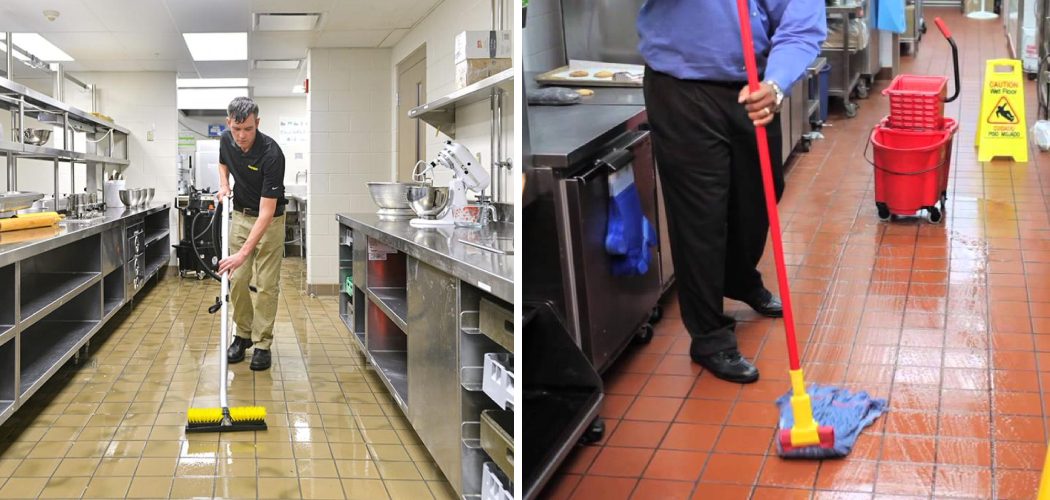Keeping a commercial kitchen floor in good condition is an important part of maintaining safety and hygiene standards for any business that serves food. It can be a tricky and time-consuming task to keep your kitchen floor clean, but with the right information on the best techniques of how to clean commercial kitchen floor, materials, and tools, you can easily have it looking sparkling clean in no time.
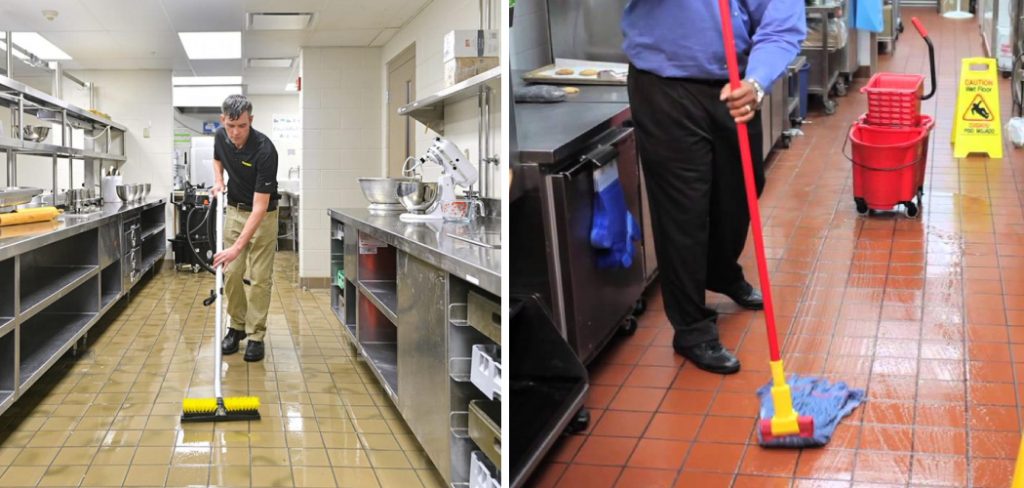
Not only does it ensure that your customers receive safe and sanitary food, but it can also help you avoid costly fines or legal trouble due to health code violations down the line. In this blog post, we will provide all the information you need to quickly and effectively clean your commercial kitchen floors so they remain safe for customers as well as staff.
What is a Commercial Kitchen Floor?
Commercial kitchen floors are typically made of concrete, ceramic tile, vinyl, or epoxy. They are designed to be easy to clean and durable enough to stand up to heavy foot traffic, water spills, and grease splashes without staining or showing wear over time.
Due to the hard surfaces used in commercial kitchens, it is much easier for dirt and bacteria to collect than in residential kitchens. Therefore, it is important that a proper cleaning routine be established and followed in order to maintain safety and sanitation standards.
The Necessity of Cleaning Commercial Kitchen Floor?
1. Prevents Illness
The necessity of cleaning commercial kitchen floors cannot be overstated. Not only will it help to prevent food-borne illnesses, but it will also keep the area looking pleasant and professional. Grease, dirt, and grime can build up on kitchen floors over time, making them slippery and unsafe as well as unsightly. In addition, grease buildup can attract pests and other animals which can further contaminate food.
2. Prevents Slips & Falls
Regularly cleaning your commercial kitchen floor is also important for safety. Grease, dirt, and food particles can make the surface slippery and increase the risk of slips and falls. This is especially concerning in a busy kitchen that sees a lot of foot traffic around sharp edges, open flames, and hot surfaces.
How to Clean Commercial Kitchen Floor in 10 Ways
Cleaning your commercial kitchen floor is a fairly straightforward process that doesn’t require any special experience or tools. The most important part of the cleaning process is using the proper materials and techniques for the type of floor you have in your kitchen.
1. Start with a Good Vacuum
Before you start any other cleaning processes, it’s important to begin by vacuuming your kitchen floor. This will help remove loose dirt and debris that can build up over time, as well as reduce the amount of dust in the air, which can be hazardous for employees and customers.
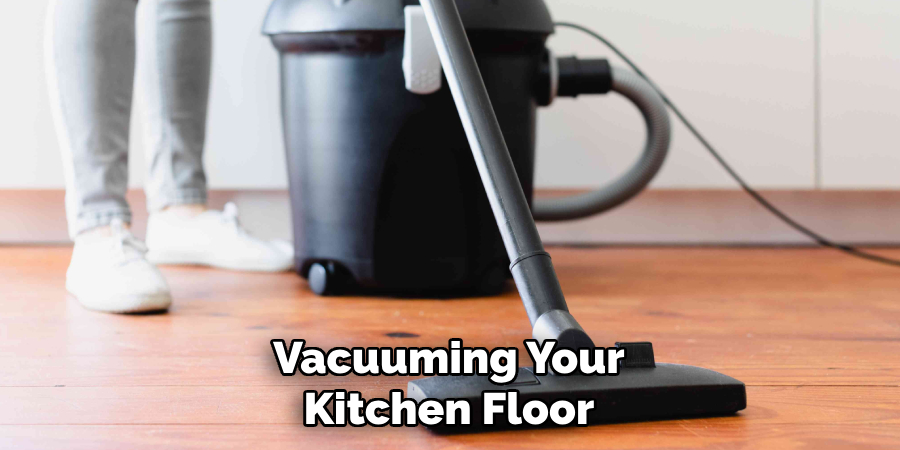
2. Sweep Up Loose Debris
Once you’ve vacuumed the floor, use a wide-bristled broom to sweep up any remaining dirt and debris. This will help ensure that all of the dirt is removed from the floor before you start mopping or scrubbing.
3. Apply an Appropriate Cleaner for Your Floor Type
After sweeping up the dirt, it’s time to apply the appropriate cleaner for your floor type. Different commercial kitchen floors require different cleaning solutions, so make sure you are using an appropriate cleaner according to the manufacturer’s instructions.
4. Mop the Floor with Clean Water
Once you’ve applied the cleaner, use a mop and bucket filled with clean water to thoroughly mop up the floor. This will help to remove any remaining dirt and grease, as well as spread the cleaner across the entire surface of the floor.
5. Rinse Away Cleaner Residue
Once you’ve finished mopping up the cleaner, use a mop and bucket filled with clean water to rinse away any residue that might be left behind. This will help to ensure that your kitchen floor is left sparkling clean after you’ve finished cleaning it.
6. Use a Sanitizing Solution
After mopping and rinsing the kitchen floor, use a sanitizing solution to kill any remaining germs or bacteria. While this isn’t necessary for all types of floors, it’s important if your kitchen floor is made of porous materials such as ceramic tiles or concrete.
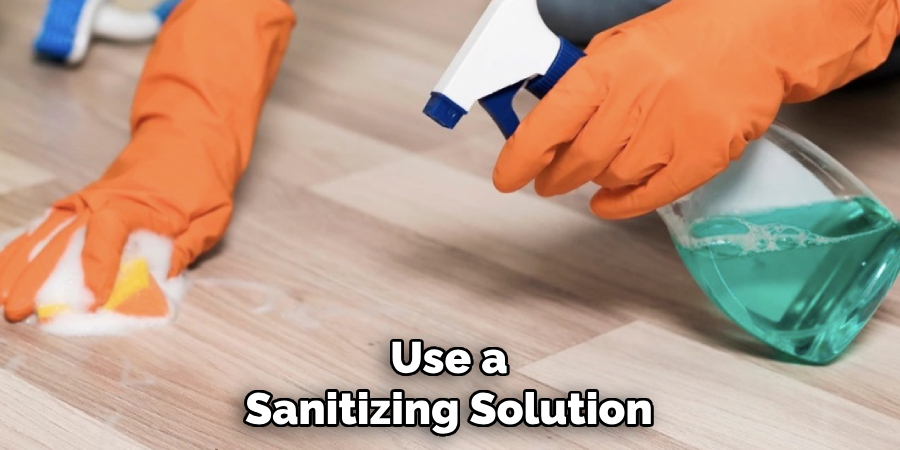
7. Dry the Floor Thoroughly
Once you’ve finished cleaning and sanitizing your kitchen floor, it’s important to dry it thoroughly. This can be done with a mop and bucket filled with clean water or by using a wet/dry vacuum if available.
8. Apply a Protective Sealant
Once the floor is dry, you can apply a protective sealant to help keep it looking good and prevent any dirt or debris from sticking to it. This will help ensure that your kitchen floor remains clean and safe for customers and staff alike.
9. Clean Regularly & Replace Mops Often
Lastly, it’s important to remember that regular cleaning and maintenance of your commercial kitchen floor is the best way to keep it looking good and safe. Make sure to clean the floor regularly and replace mops often in order to keep your kitchen in top shape.
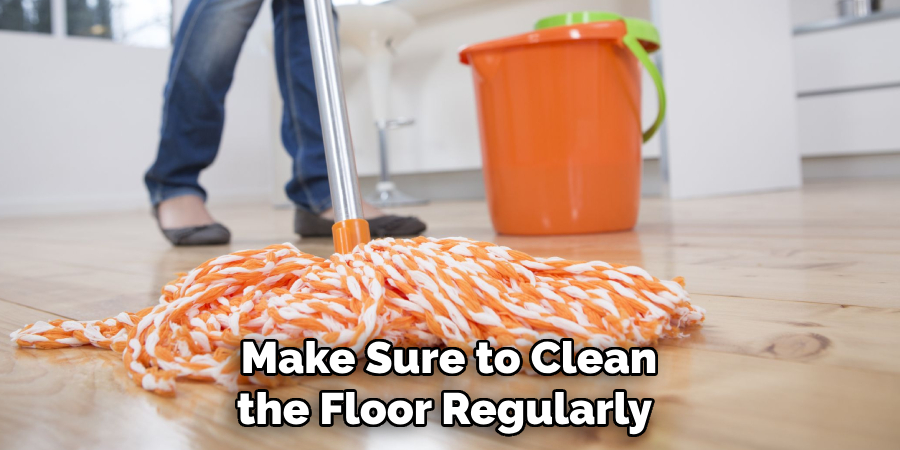
10. Hire a Professional Cleaner Once Per Year
Finally, consider hiring a professional cleaner to come in and deep clean your commercial kitchen floor at least once per year. This will ensure that all of the hard-to-reach areas are properly cleaned, as well as any hidden dirt and bacteria that may have accumulated over time.
Using these tips on how to clean commercial kitchen floor can help keep your kitchen sparkling clean and safe for customers, staff, and anyone who enters the area.
8 Maintenance Tips for Cleaning Your Commercial Kitchen Floor
When it comes to running a successful restaurant, one of the most important aspects is making sure that your kitchen floor is always clean and in good condition. Not only does a clean kitchen floor reduce the risk of food contamination, but it also makes the space look more aesthetically pleasing and inviting to customers. Here are 8 maintenance tips for cleaning your commercial kitchen floor:
- Sweep or vacuum the floor regularly. The first step in keeping your commercial kitchen floor clean is to sweep or vacuum the entire area daily. This will help remove any dirt and debris that has built up during the day.
- Mop regularly. In addition to sweeping or vacuuming, it’s important to mop the floor regularly. This will help remove any grease and grime that has been left behind. Depending on how busy your kitchen is, you may need to mop the floor several times a week.
- Use the right cleaning products for the job. Different types of commercial kitchen floors require different kinds of cleaners. Make sure you are using a product that is specifically designed for the kind of flooring you have.
- Pay extra attention to high-traffic areas. To ensure your kitchen floor remains clean, it’s important to pay special attention to high-traffic areas where dirt and debris are likely to accumulate. This includes busy pathways and doorways.
- Spot clean when needed. In addition to regular cleaning, it’s important to spot clean areas when needed. This includes any spills or spots that have been missed during regular cleaning.
- Use mats and rugs around the kitchen area. Placing mats and rugs in high-traffic areas can help reduce the amount of dirt and debris on your floor. It’s also a good idea to line doorways with mats to help prevent dirt and other debris from being tracked into the kitchen.
- Check for signs of damage or wear and tear. It’s important to regularly inspect your commercial kitchen floor for any signs of damage or wear and tear. This includes cracks, chips, buckling, etc. Make sure to repair any problems as soon as possible to prevent further damage.
- Replace floor tiles as needed. If your commercial kitchen floor is made of tile, you should replace any cracked or broken tiles as soon as possible. This will help keep the floor looking good and reduce the risk of slipping and falling accidents.
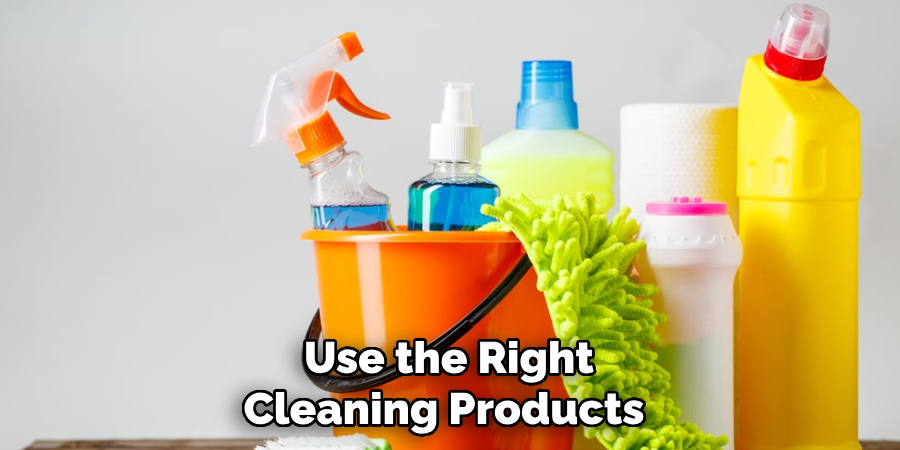
By following these 8 maintenance tips, you can ensure that your commercial kitchen floor remains clean and in good condition. This will help reduce the risk of food contamination, as well as creating a more inviting space for your customers.
For extra protection, it’s also a good idea to invest in high-quality kitchen floor mats. These mats are designed to absorb grease and dirt, making them ideal for busy restaurants. They also provide an added layer of protection against slips and falls.
Conclusion
A clean and safe commercial kitchen is a must for any business, and keeping the kitchen floor in tip-top shape is an important part of that. From preparing to cleaning, following these steps on how to clean commercial kitchen floor will help make sure your kitchen floor is a hygienic and safe work zone.
Regular maintenance — such as daily sweeps as well as occasional deep cleans — are particularly important. Know when to call in the professionals if the job calls for something more involved.
Not only will having a gleamingly clean kitchen floor improve the aesthetic for customers, but it will also cultivate an atmosphere of safety and wellbeing for employees and guests alike. Taking room temperature into account can be beneficial; usually colder temperatures are more suitable for efficient cleaning procedures.
Above all else, maintaining a clean and robust commercial kitchen floor can be achieved by implementing proper planning, execution, and training processes that will de-clutter this crucial task in no time!
